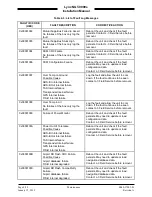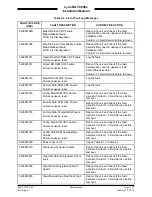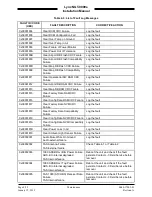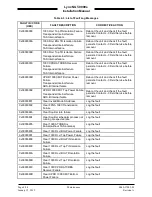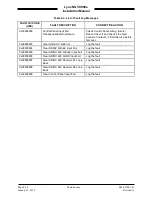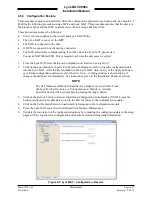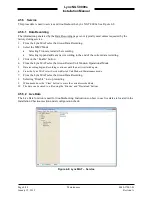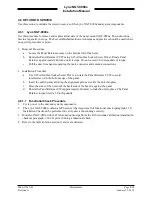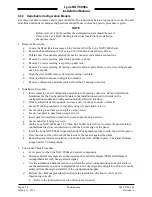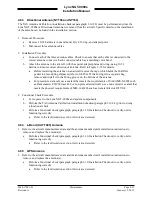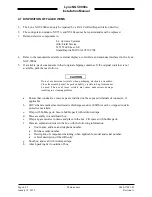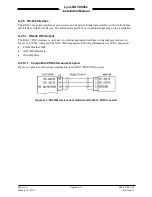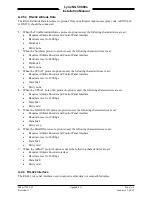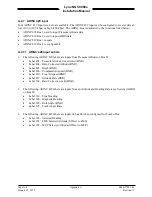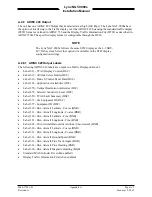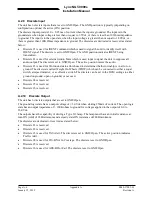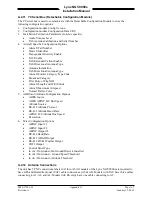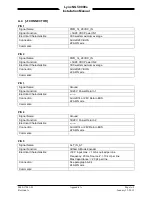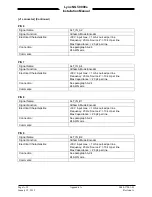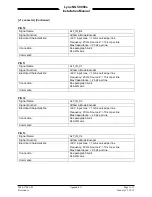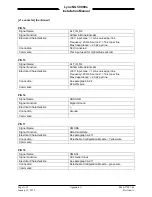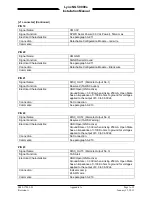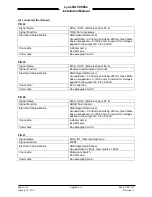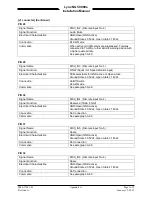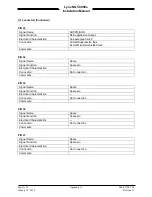
Lynx NGT-9000s
Installation Manual
Appendix A
Interface Signal Name & Cable Characteristics
A.1 INTRODUCTION
This appendix defines digital interface label information and electrical characteristics of all input and
output signal names to the Lynx NGT-9000s Multilink Surveillance System (the unit). Sufficient data is
included to use a bus reader for the purpose of identifying signal input and output characteristics and
perform an electrical load analysis for the aircraft. The input and output interfaces are sometimes
configurable as noted in the following paragraphs.
The interface characteristics contained in this appendix are fully compatible with ARINC specifications
where noted. Connection information identifies the connector-pin and signal names as shown on the
external interconnect wiring diagram in the installation section.
A.2 INPUT AND OUTPUT INTERFACES
A.2.1 Input Power
The unit has two power inputs available for 14 VDC or +28VDC operation. The inputs are not
diode isolated and are intended to be tied to the same power input device in order to handle the required
current.
A.2.2 RF Suppression Bus
The transmission asserts a positive voltage on the output to provide the suppression to other L-band
equipment on the airplane. The suppression pulse output is DC coupled, and drives positive pulses not
less than 18 Vdc or greater than 70 Vdc into system loads from 300 to 2000 Ohms with a shunt
capacitance of up to 1850 pF. The signal meets the hardware characteristics as defined in ARINC 735B
Attachment 8.
A.2.3 Audio Output
The audio output shall be capable of supplying up to 40 milli Watts (RMS) at 1000 Hz into a 600 Ohm
audio distribution system. This output is directly compatible with industry standard audio panels.
A.2.4 Gilham Input (Altitude Input)
The Gillham interface is optional. Only one altimeter input source (gray code, ARINC-429 or RS-232)
may be connected. The Gillham interface consists of 11 discrete lines. These 11 discrete lines represent
11 binary digits representing the Gillham encoded pressure altitude. The Gillham code uses a modified
Gray code algorithm to ensure that no more than one bit changes between adjacent altitudes. The three
lowest significant bits represent 100 foot increments. The eight highest significant bits represent 500 foot
increments.
The digits are labeled as follows beginning with the most significant bit to the least significant bit (D2,
D4, A1, A2, A4, B1, B2, B4, C1, C2, C4).
0040-17001-01
Appendix A
Page A-1
Revision A
January 15, 2015


